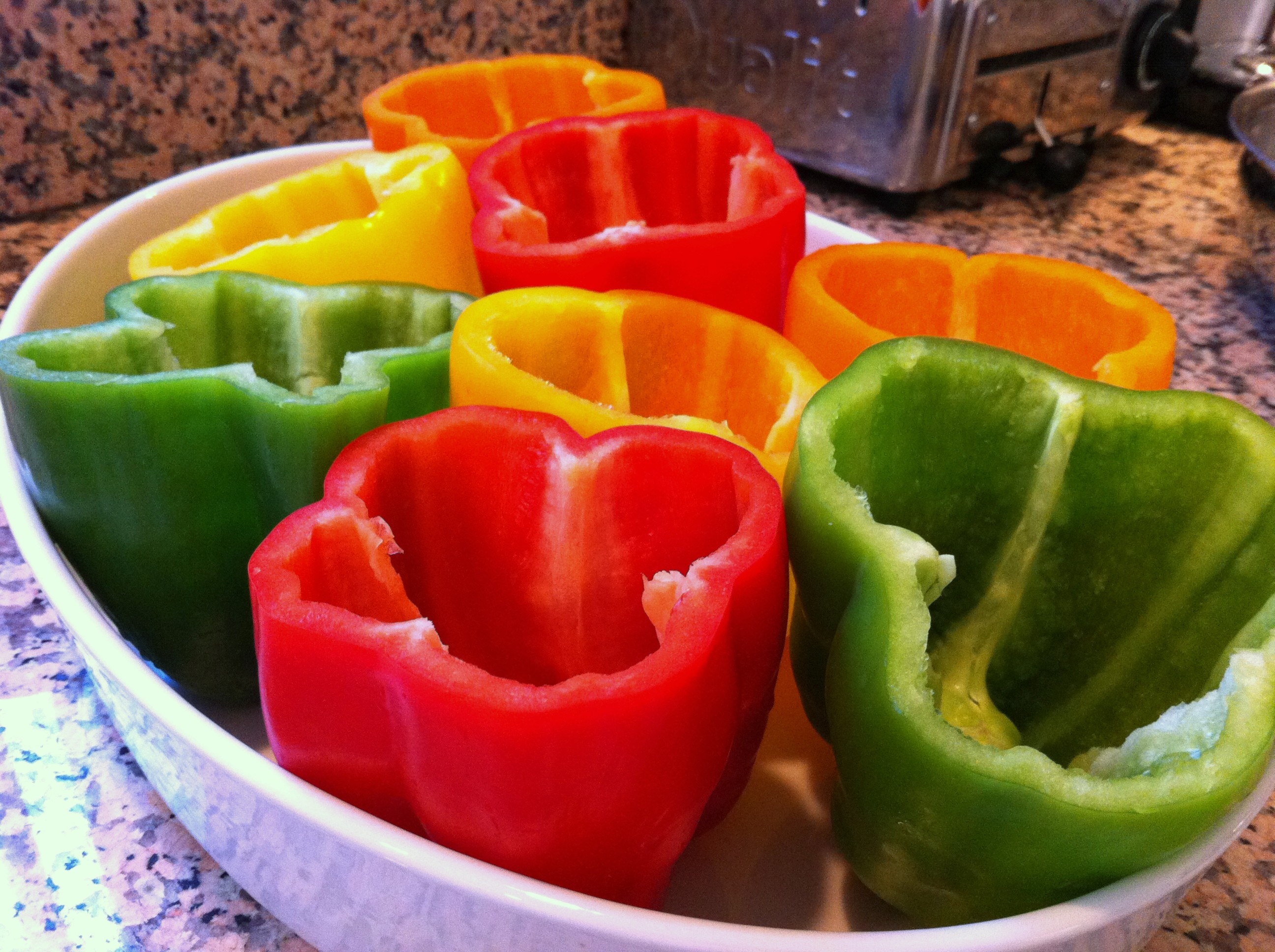My father called this dish the poor person’s banquet. It is similar to that popular Italian entrée, chicken cacciatore, but with a Puerto Rican boricua slant. What I like about this recipe is that the ingredients can be added or changed to suit the circumstances or the pocket book. If desired, roasted red peppers can be substituted for green bell peppers (pimento). You can add peas. mushrooms or almost any other vegetable you have on hand. Or keep it simple. Some folks prefer to remove the skin from the chicken before cooking. Others like to retain the skin since it renders a richer flavor. It’s all a matter of individual taste.
In the island of Puerto Rico, for this dish, the accompaniment is rice and beans. Back in Spanish Harlem, when I was growing up, in our family we paired this dish with macaroni. For some reason, my father loved it with tubular pasta like macaroni or rigatoni. It was our thing. Actually, you can serve this recipe with whatever you want—be it potatoes, pasta, quinoa, couscous, or kasha. It’s that versatile.
The dish calls for sofrito, that popular base condiment used in our cooking. My prior post (Biftec Estofado – 03/04/17) has a quickie way to prepare sofrito. Refer to that and you won’t have any problems whipping it up. And, as noted in that post, under no circumstance get the store-bought variety—it’s chemicalized crap.
POLLO GUISADO
(Stewed Chicken)
1 medium stewing chicken, about 2 1/2 pounds, cut into serving pieces
2 cloves garlic, peeled
8 whole peppercorns
Salt to taste
1 tablespoon fresh oregano or 1 teaspoon dried
1 bay leaf
4 sprigs fresh parsley
2 medium Idaho or Maine potatoes, halved and quartered
1 small onion, thinly sliced
1 teaspoon sofrito
1 8-ounce can tomato sauce
8 pitted black olives, rinsed in cold water and halved
1/2 medium green bell pepper, cut into strips
1. Rinse chicken pieces under cold running water and pat dry with paper towels.
2. Put the garlic, peppercorns, salt and oregano into a mortar and pound until crushed. Rub this seasoning thoroughly into the chicken pieces.
3. In a large pot or casserole (a Dutch oven is great for this), place the chicken pieces along with the bay leaf and parsley sprigs. Add water to cover chicken pieces. Bring to a boil, lower heat to medium. Cover and simmer until chicken pieces are tender (about 20 minutes).
4. Add potatoes, onion slices, sofrito, tomato sauce and olives. Stir and combine.
5. Cook, covered, until potatoes are tender and sauce has thickened somewhat (about 1/2 hour). Garnish with bell peppers.
Yield: 4 servings.












